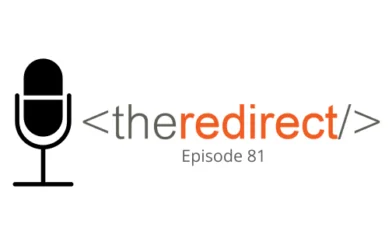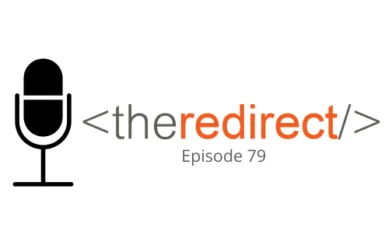Episode 24 / November 17, 2017
Listen now:
In this episode of The Redirect Podcast:
- Pay-per-click campaigns like Google AdWords do not directly influence organic search, but how about indirectly? (begins at 1:09)
- A look at 2017 factors for local SEO (begins at 10:50)
- Our take on crawl tools – what they are and how you should use them (begins at 19:35)
Using PPC to Impact Organic Results
This discussion stems from a recent episode of Moz’s Whiteboard Friday. As Rand points out, NO, PPC is not going to directly impact organic ranking results. The teams are very much separated from one another. In fact, legal is separate from accounting, which is separated from Ad Ops folks inside the AdWords team alone. So how might PPC indirectly impact organic search?
Searchers who see an ad may be more likely to click on organic links from that brand. Many a time, we see this as a branded campaign play. So while many PPC professionals are engaged in heavy non-branded campaigns, if you are running a branded campaign, and someone searches for your brand, sees your ad, then your organic position, they could be (could be) more likely willing to click on your organic listing because of name/brand recognition.
What about how engagement with a brand through paid search has an impact on organic search? If someone has previously performed a search, clicked on a paid ad and experienced the brand – meaning they were, say, on your website – then later on went back and performed another search, they might be more inclined to click on your organic listing in SERPs. Keep in mind, this is based solely on the fact that they have experienced your brand, not PPC ads influencing organic directly.
The question will often come up: If we’re ranking organically, why would we pay for that traffic, as well? Furthering out some of the theories on how PPC can indirectly influence SEO, and how the two can work together, this would mean testing PPC ads on those phrases you’re ranking for organically, and seeing how this affects organic click-through rates.
Rand provides another interesting twist on PPC and SEO: If someone clicks on the ad, then ends up liking what they find, sharing a link, writing a piece of content about it, etc… These are not commercially driven by intent, but are perhaps a way of distribution and awareness of your content or brand.
[Referenced during the podcast: Tips for Last-Minute Holiday Campaigns]
Local SEO Ranking Factors
Keeping your Google My Business listing updated is fairly easy to do, but is often overlooked. It’s one of the many ways to make sure your business will show up in local search results, including the “local pack.”
Local SEO Guide’s 2017 Local SEO Ranking Factors is a wittily-written piece that shares insights collected on over 100,000 local businesses to determine which factors contribute to ranking on Google’s local pack.
The article mentioned the importance of reviews, specifically when they have SEO value: “Having a keyword you are trying to rank for, and a mention of a city you are working to rank in, in reviews has a high correlation with high ranking Google My Business results.” I’ve seen sources recommend that when you are reaching out to customers to request reviews, it can be helpful to suggest a specific phrase or service you would like the customer to discuss in their review. This can be done very naturally, and provides helpful guidance that might increase the chances of a review being written.
Searcher engagement with your Google My Business presence is also important to local rankings, so besides having a review outreach strategy, have photos for viewers to engage with that are updated regularly (at a frequency that makes sense for your business).
The article also emphasized the importance of investing in your website. While it’s possible to rank in local packs without having a website, if your website is ranking in local organic search, you are much more likely to be ranking in packs.
Using Website Crawl Tools
This topic was shared by Patrick after reviewing recent articles on crawl tools from Search Engine Land and Search Engine Watch.
When analyzing a site, one of my favorite things to do is crawl a site, download the CSV file, and dissect it. For me, this dissection reveals so much about a site beyond the initial crawl, including groupings of page topics, repeated elements, strengths, weaknesses, and holes. It’s the crawl that provides the foundation for all your data when you analyze a site.
There are several things you need to be sure your crawl can do, like detect robots, uncover broken links (and what triggered the URL), detect redirect loops, and detect https vs. http and www vs. non-www URLs. These items can really paint a picture of what your site is telling Google below the surface.
Find a crawl tool that works best for you; there are several out there that each do it a little bit different and provide a few different features, paid and free. The free ones usually don’t carry all the same features as the paid version. Don’t be afraid to try a free trial.
Another best practice is to re-crawl a site after it relaunches to verify that all the changes that were made, “took.” Sometimes not everything on the checklist gets checked, or an “I thought you were gonna do that” issue arises when working with teams. Or sometimes seeing the site “in the wild” can totally change things. So do the re-crawl.
Long story short, take what you do with whatever crawl tool you use, and use it well. With so many options of crawl tools out there, there isn’t a right tor wrong way to make it work. Find a solution and get the most out of the tool to meet your needs.




